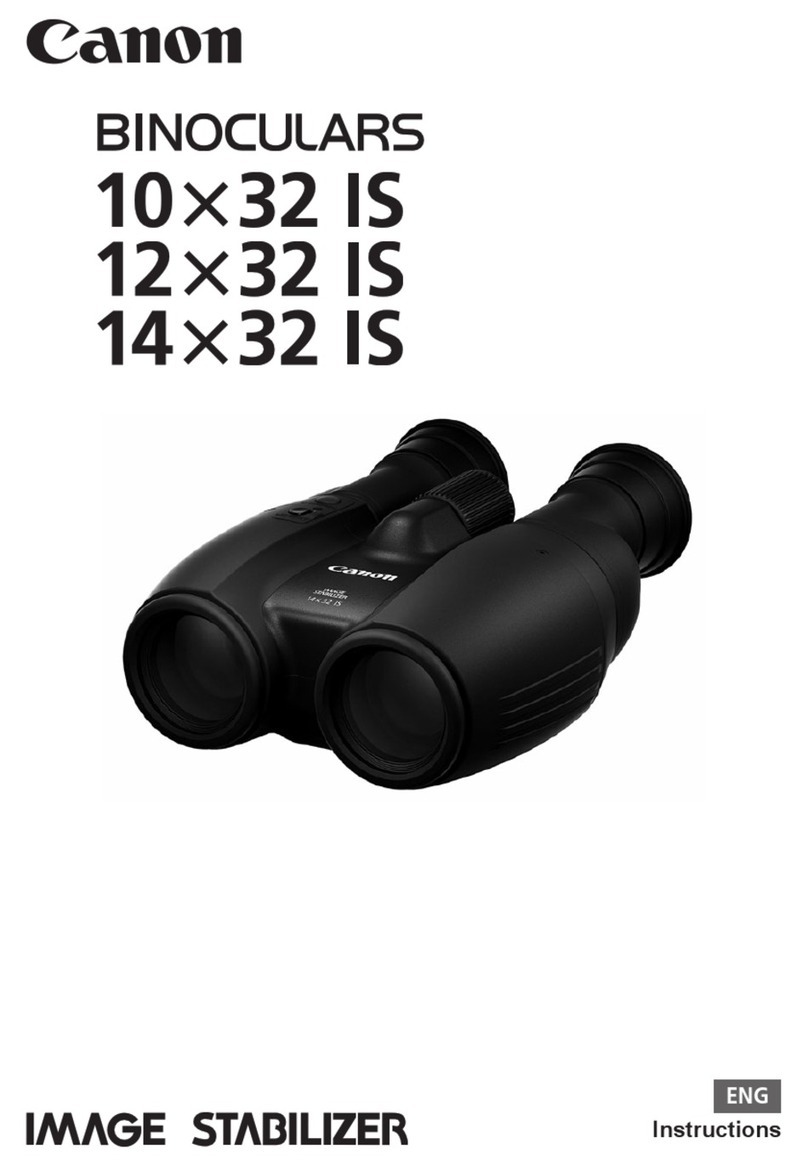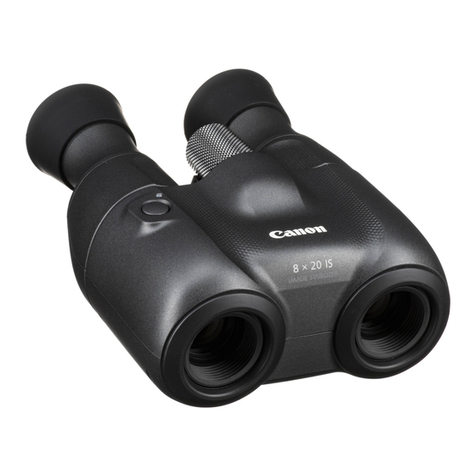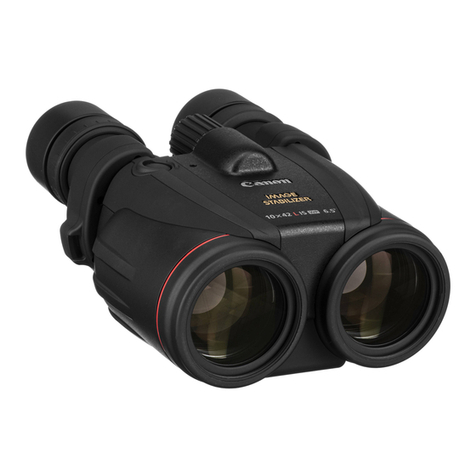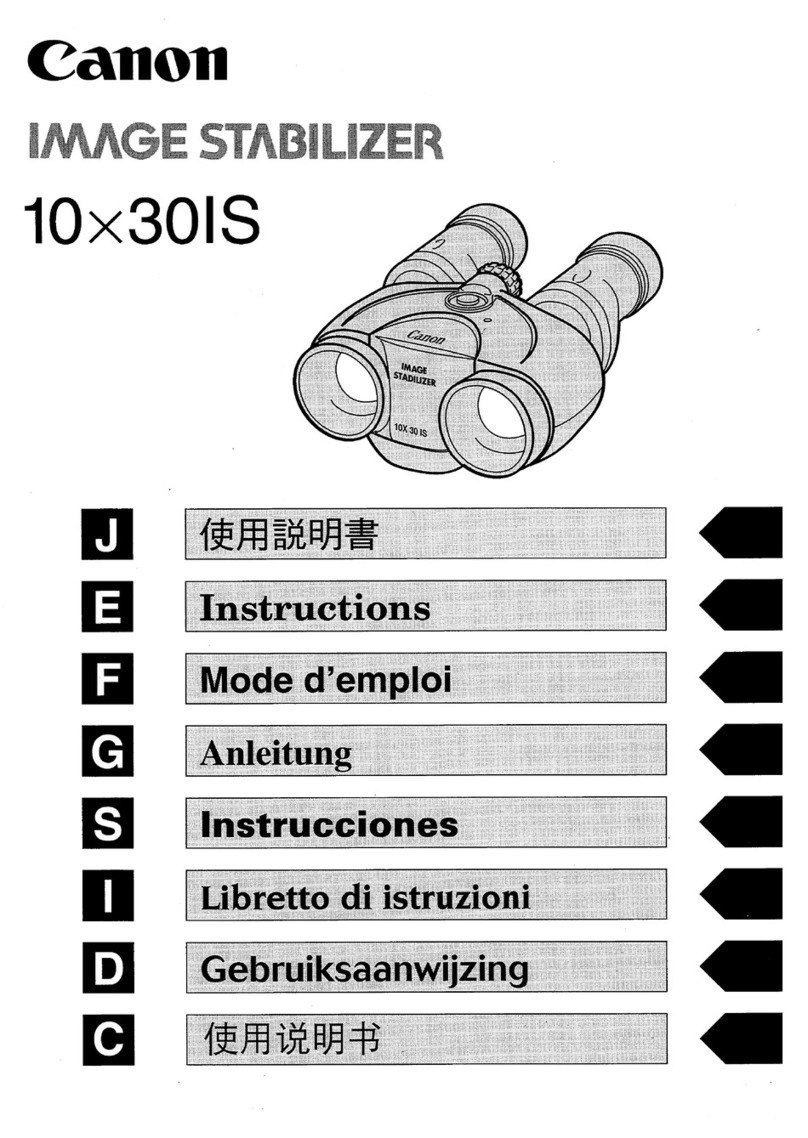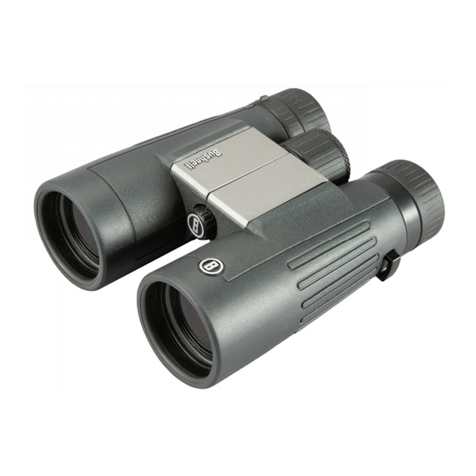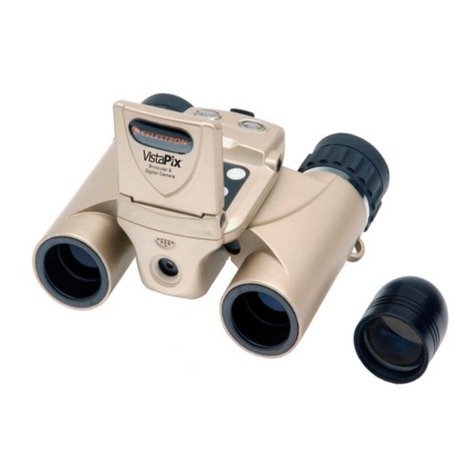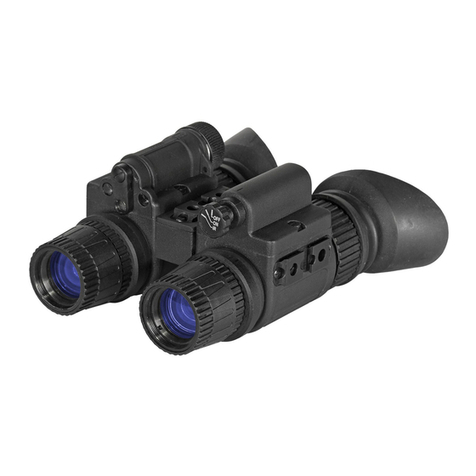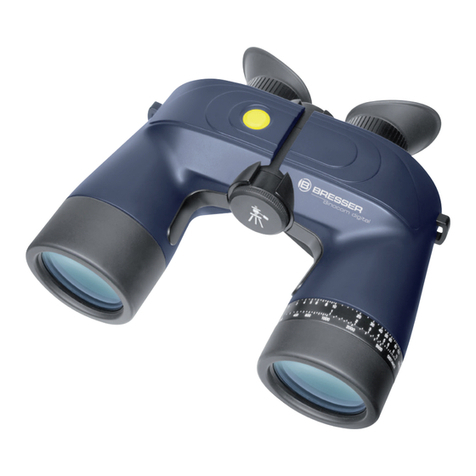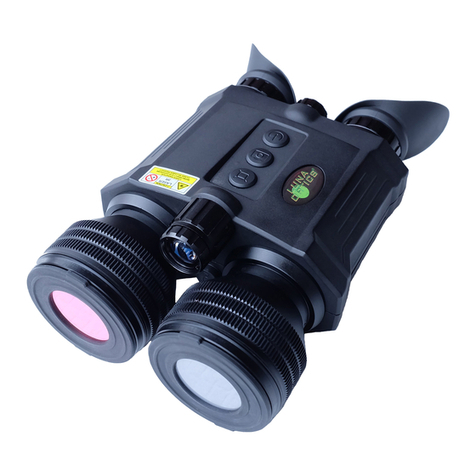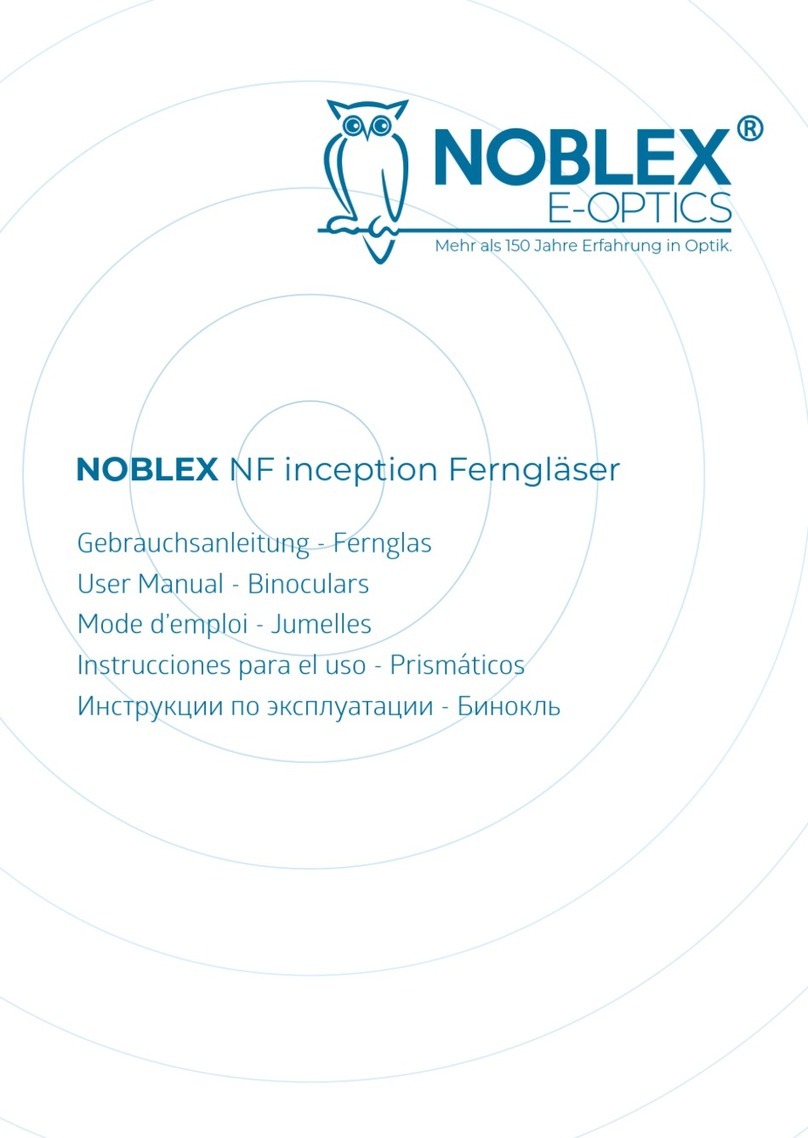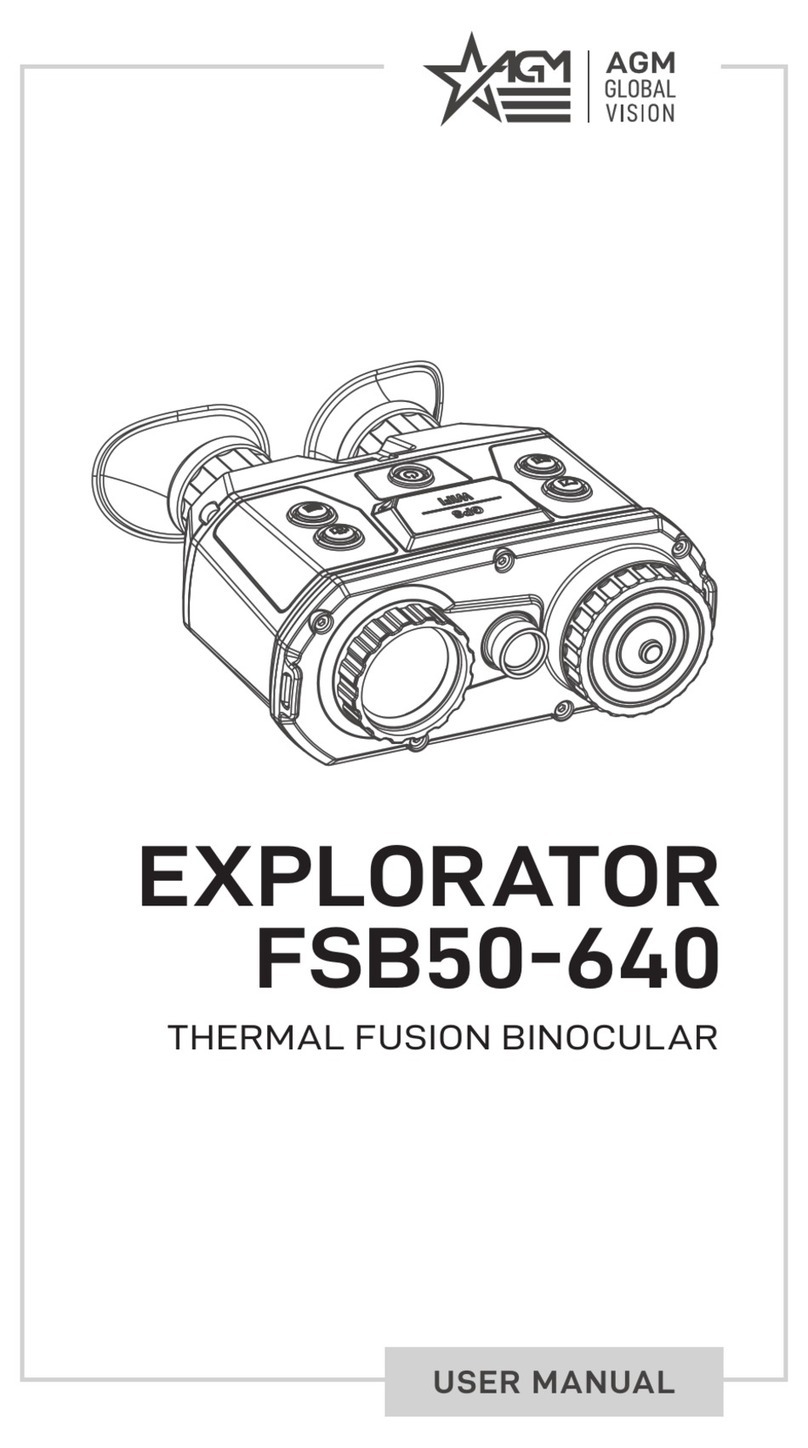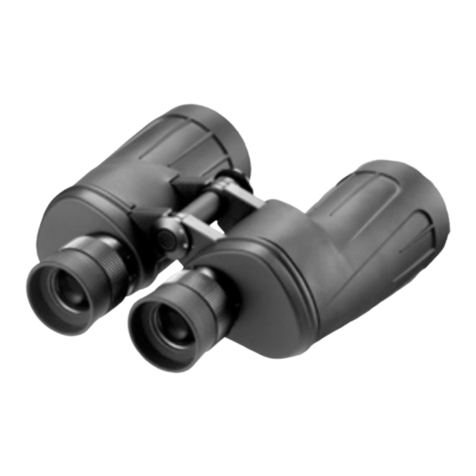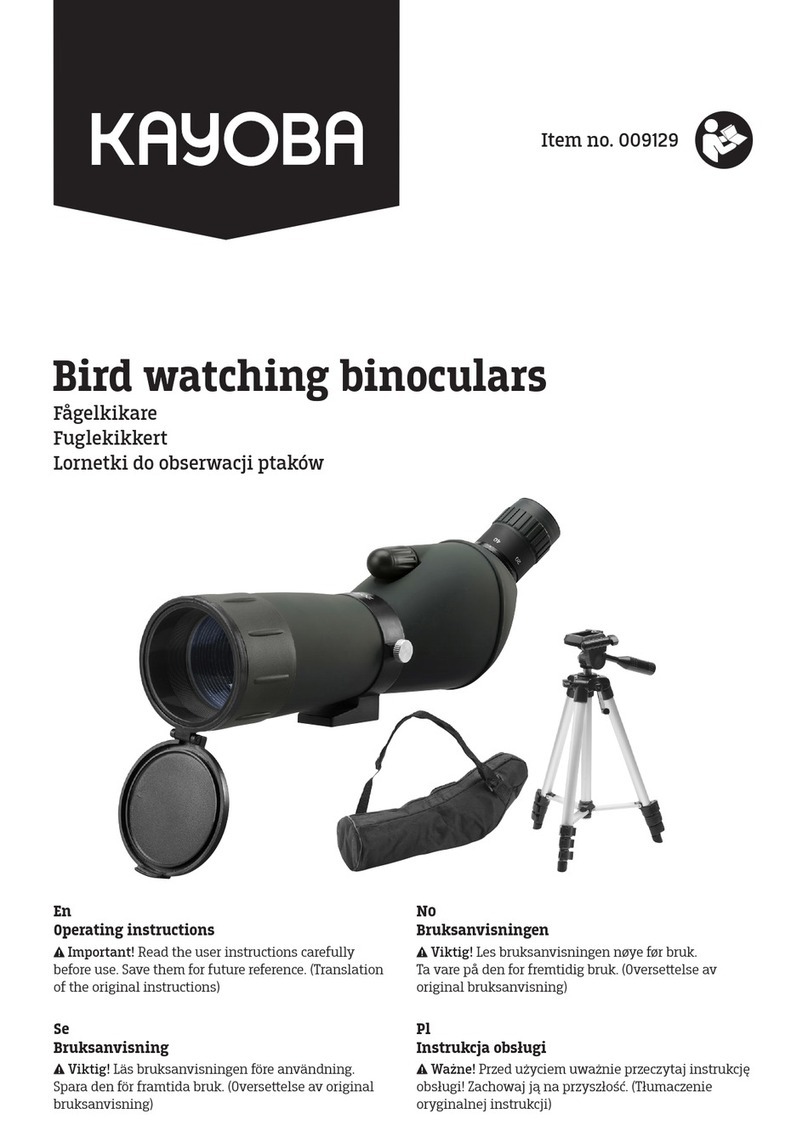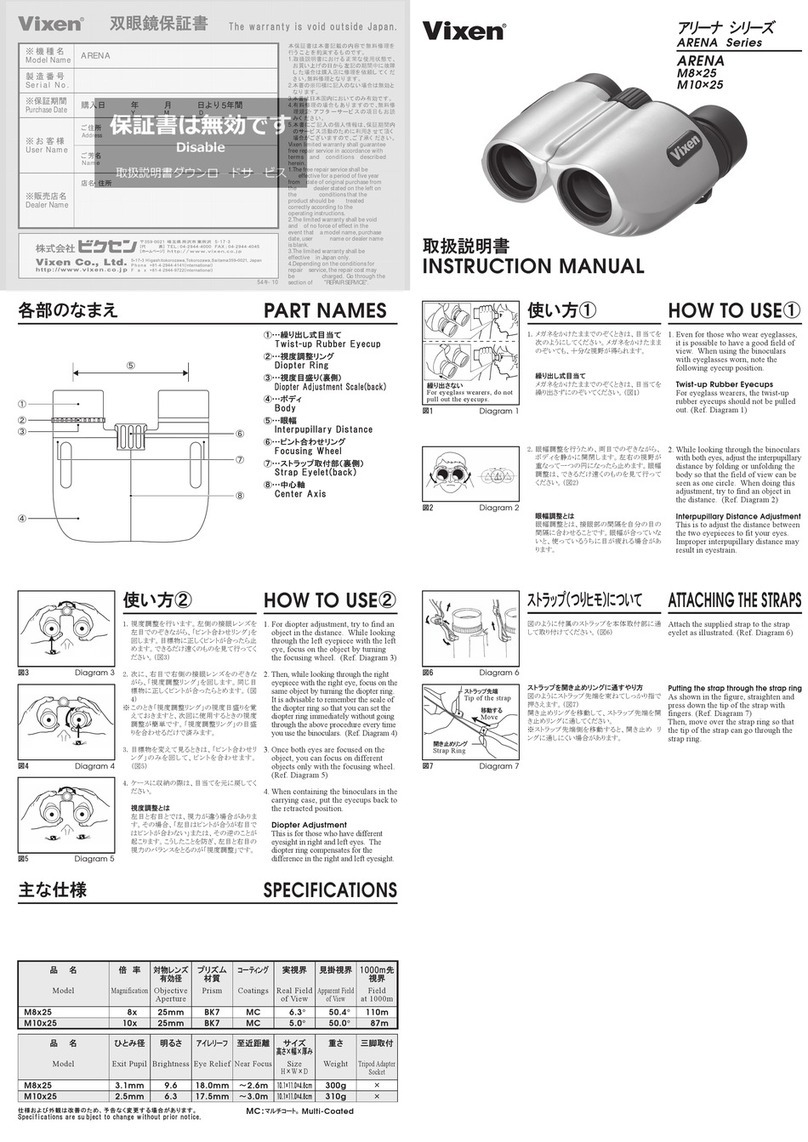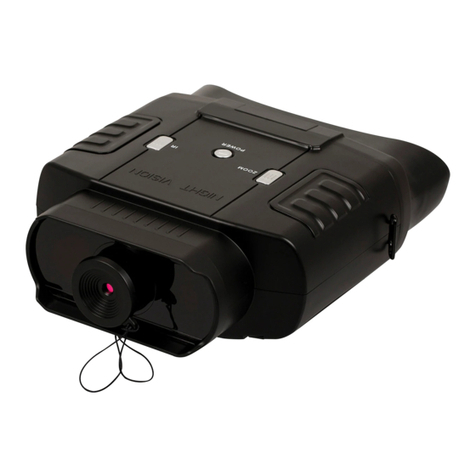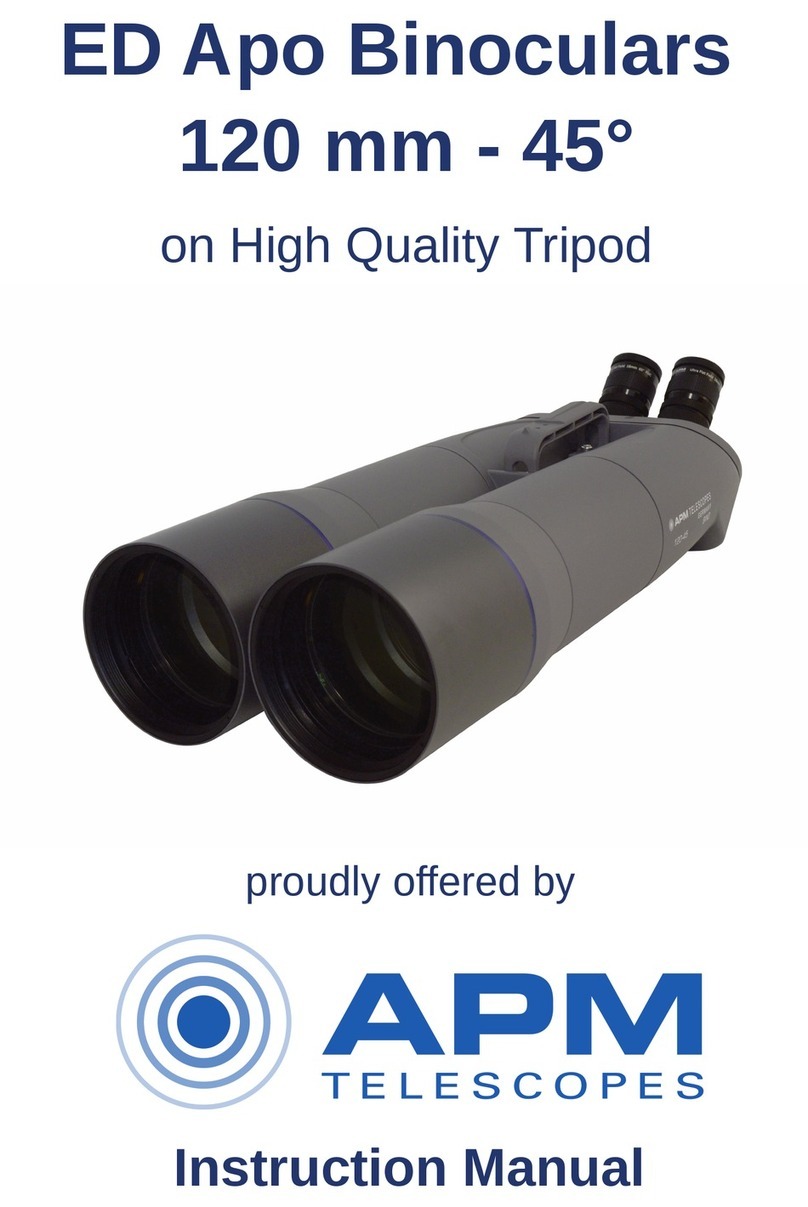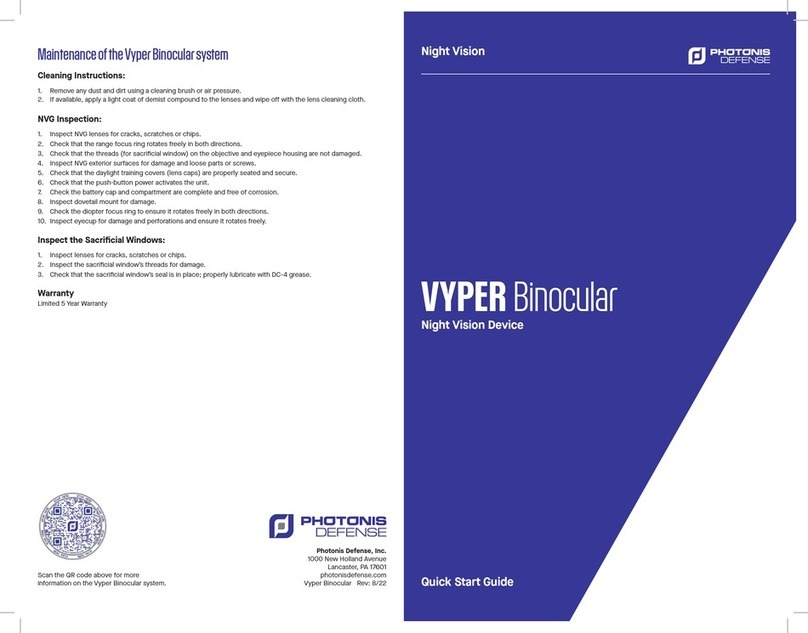
How to Use the Binoc lars
Eye Spacing/Diopter Adustment/
Rubber Eyepieces
ings
ens
blet
ner
Remembering the readings of
the diopters will be convenient
to adjust the binoculars after
someone else has used them.
With the IS series, you can
simply lengthen the eye cups
by squeezing the edges of the
eye cups.
1) Look through the binoculars with
both eyes, and adjust them for the
spacing of your own eyes (with the
IS series, use the eyepiece barrels).
The instrument is correctly adjusted
once both views merge into one circle.
Next, adjust the diopter adjustment rings
to your eyesight. This is an important
step, as each person has different
eyesight.
2) With your right eye closed, look
through the left eyepiece with your
left eye. Using the focusing ring,
adjust the focus on an object.
3) Now, close your left eye and look
through the right eyepiece. If the
object is in focus, the diopter was
adjusted correctly. Otherwise, use
the right diopter adjustment ring
to readjust the focusing.
4) By adjusting the focusing ring each
time you look at an object, the
diopters will also automatically focus.
Please note that eye spacing and diopter
adjustment is different for each person.
Another person would have to adjust the
eye spacing and diopters again.
• For eyeglass wearers
If you look through the binoculars while
wearing eyeglasses, your eyes will be
further away from the eyepieces, and
scenes will gradually shade off at the
edges. To prevent this, use the foldaway
rubber eyepiece rings if available.
3
Ca001_binENG.idd 1/23/01, 12:54 PM3
